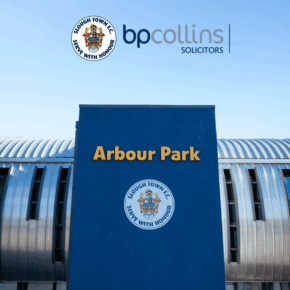B P Collins’ criminal team advises.
What are Tree Preservation Orders?
A Tree Preservation Order is an Order made by your local planning authority to protect specific trees, groups of trees or woodlands. The Order will seek to prohibit the cutting down, topping, lopping, uprooting and wilful damage or destruction of the trees without the written consent of the local authority.
If you are the owner of a tree that is protected by a Tree Preservation Order, then you must not carry out or cause or permit the carrying out of any of the prohibited activities without the local authority’s written consent.
Why are Tree Preservation Orders made?
The local authority may consider it appropriate to make a Tree Preservation Order if it appears to them to be advantageous in the interests of amenity to make the Order.
When considering whether to make the Order, the local authority will consider whether the tree contributes to the local biodiversity of the area and visual amenity. Other considerations also include the age of the tree and whether it is a rare species.
Once an Order is made, people are given the opportunity to object or comment on it. Before the Order is confirmed, the local authority must take into account all objections that are made. Potential objections could include concerns about whether the tree may cause damage to properties or residents. However, if the local authority considers that the benefits in the amenity of the tree outweigh the issues raised by the objections, especially if the objections are speculating on future events rather than providing evidence that the tree has already caused problems, they will have the final decision of whether to make the Order.
What to do if you want to carry out work on a protected tree
If you want to carry out work on trees, it is advised to first find out if it is protected. You can do this by looking on the local authority’s website or contacting the local authority directly to request the relevant information.
Once you have confirmation that the tree is protected, permission must then be sought from the local planning authority through an application form available on their website. However, if any of the following exceptions exist then this may exempt the landowner from requiring the local authority’s consent. The exemptions are any work:
- On dead or dangerous trees and branches. This does not include work on diseased or dying trees where consent will still be required unless another exemption applies
- To comply with an Act of Parliament
- To prevent or abate a nuisance
- Necessary to implement a planning permission
- On fruit trees
- By or for statutory undertakers
- For highway operations
- By the Environment Agency and drainage bodies
- For national security purposes
Before relying on these exceptions, it is advised to obtain advice from a qualified arboriculturist and confirmation from the local authority of the requirements to ensure you do not breach an Order. If the local authority receives notice of work under an exception but it considers that the exception does not apply, it may seek relief to stop the works in the Crown Court.
If you are accused of breaching a Tree Preservation Order, do get in touch with our experienced criminal lawyers by email or by phone on 01753 889995.
What are the offences and repercussions of breaching a TPO?
If you carry out any work on trees protected by a Tree Preservation Order without the local authority’s consent then this is considered a breach of the Order and is a criminal offence for which you may be fined. You will also have a duty to replace a tree removed, uprooted or destroyed in breach of the Order.
If the local authority becomes aware of unauthorised works on protected trees, they may do one of the following:
- Do nothing – depending on the circumstances of the case
- Negotiate with the owner to remedy the works to their satisfaction
- Consider issuing a warning to the owner or those suspected of unauthorised works that the works may lead to prosecution
- Seek an injunction to stop the works and prevent any breaches
- Consider whether they can commence a prosecution for one of the below offences
The Town and Country Planning Act 1990 (the Act) states that anyone who, in contravention of a Tree Preservation Order, does one of the following, is guilty of an offence.
- Cuts down, uproots or wilfully destroys a tree
- Tops, lops or wilfully damages a tree in a way that is likely to destroy it
- Causes or permits such activities
The same Act states that anyone who is found guilty of these offences and is convicted in the Magistrates’ Court is liable for a fine up to £20,000. If the case is considered more serious, the guilty party may be tried in the Crown Court and if convicted will be liable to an unlimited fine.
The Act also provides that if there is any breach of the order other than as listed above, then the guilty party will be liable for a fine up to £2,500.
Local authorities may bring an action within six months from the date on which they obtained sufficient evidence of the breach. They cannot commence proceedings more than three years after the offence was committed.
Under Section 44 of the Magistrates’ Courts Act 1980, any person who aids, abets, counsels or procures the commission by another party of an offence, shall be guilty of that offence. Meaning that a third party who has acted in a way that assists in the breach of the Tree Preservation Order may also commit an offence.
How can B P Collins LLP assist if you are accused of breaching a Tree Preservation Order?
If you are accused of breaching a Tree Preservation Order, we understand that this can cause significant concern, especially if you were not aware that the tree was protected. Our dispute resolution team at B P Collins LLP will be able to assist in reviewing your case and work with you to ensure the best possible outcome.
Please email enquiries@bpcollins.co.uk or call 01753 889995 for further advice.


















